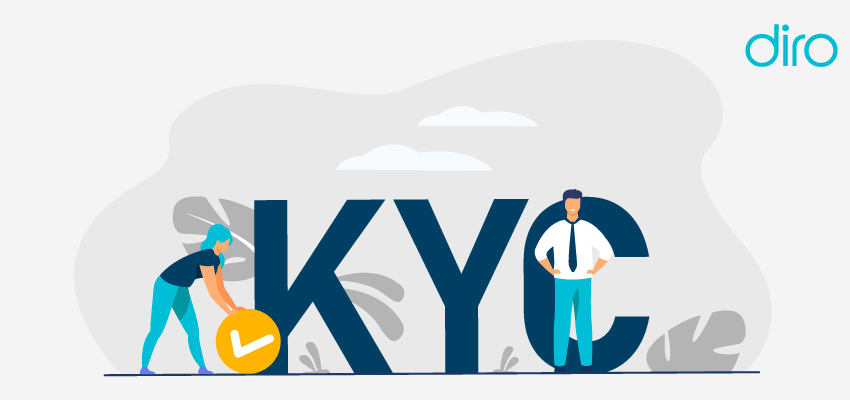KYC in eCommerce – What You Need to Know

If you run an eCommerce business, you already know that trust is everything. Customers want fast checkouts, easy returns, and secure transactions. But behind all of that sits something you can’t afford to overlook—KYC. Know Your Customer isn’t just a checkbox for compliance. It helps you spot fraud, avoid chargebacks, and protect your business from regulatory trouble.
So, what does KYC mean for online stores? How do you do it without frustrating your customers? And why does it matter even if you’re not a bank?
Let’s break it down.
What is KYC for eCommerce?
KYC (Know Your Customer) is a way to verify a customer’s identity before or during a transaction. For banks, it’s mandatory. For eCommerce platforms, it’s becoming necessary, especially if you’re dealing with high-ticket items, digital goods, cross-border payments, or offering any kind of credit or wallet service.
You don’t need to check every buyer’s government ID for every t-shirt sale. But you do need to understand who your customer is, how they behave, and whether their activity looks suspicious. That’s where eCommerce KYC comes in.
Why KYC Matters in eCommerce
- Fraud is getting smarter – Fake identities, stolen cards, and synthetic fraud (where real and fake details are blended) are rising. Fraudsters are using the latest tech and new-age practices to defraud customers. KYC helps businesses catch odd patterns early so they can protect the customers on their platform before the transaction even clears.
- Chargebacks cost more than just money – Chargeback fraud is any eCommerce business’s biggest nightmare. When a buyer disputes a charge, you often lose the item, the money, and your credibility with payment processors. Fraudsters take advantage of chargebacks to keep both the products and the money. With eCommerce KYC verification, businesses can prevent transactions that look off before they become a headache.
- Regulations are closing in – If you offer BNPL, wallets, or let users store card info, you’re no longer just a store, you’re a financial service. That means more scrutiny. KYC is not just a way to keep your customers protected, it’s also a way you can keep yourself protected from regulatory compliance fines.
- Trust sells more – When shoppers know you care about their safety, they’re more likely to come back. Strong KYC practices show customers you’re not just protecting your bottom line, you’re protecting them too.
KYC in Action: What It Looks Like for Online Stores
You don’t need a full compliance team to run basic KYC. There are levels to it. Here’s what it might look like at different stages:
- Basic KYC – Email and phone verification. Geo-IP checks. Velocity checks (how many purchases from one card in a short time). This stops bots and simple fraud.
- Intermediate KYC – Address matching, IP-vs-shipping location alerts, behavior analytics. For digital goods or high-risk areas, this gives you more control.
- Advanced KYC – ID document verification, biometric checks (like face match), liveness detection. You’ll see this more with BNPL, crypto checkout options, or high-ticket items.
Good KYC doesn’t interrupt the customer journey. It works in the background or steps in only when needed. The goal is to balance friction and security.
Common Triggers That Call for KYC
Not every transaction needs deep verification. To keep customers protected, e-commerce businesses need to identify transactional red flags that require additional Know Your Customer (KYC) scrutiny. Here are some of the most common eCommerce red flags that require additional checks:
- Sudden order spikes from one account
- Multiple cards used on one profile
- Billing and shipping don’t match, especially across countries
- IP address doesn’t match the claimed location
- First-time buyers making large orders
- Unusual checkout behavior (very fast or slow clicks)
Use these signs as signals that additional scrutiny is needed. However, these signals shouldn’t mean instant block. With the right KYC tools, you can decide what to flag, hold, or approve.
How to Start Using KYC Without Killing Conversions
It’s easy to go overboard and scare customers away with too many pop-ups or requests. But smart KYC lets you ask only what’s needed, and only when it matters.
Basics of consumer KYC for eCommerce businesses:
- Use email and phone verification at signup or checkout.
- Add captcha or bot detection for high-volume product drops.
- Geo-check IPs silently, no need to ask, just monitor.
- Add address validation to avoid shipping fraud.
- Track behavior across devices, too many logins from different locations in a short time? Flag it.
- For higher-risk orders, integrate document upload only when the fraud risk is high.
If you’re working with a payment gateway or fraud provider, many of these tools are already baked in. Use them.
KYC Tools Built for eCommerce
You don’t have to build it all from scratch. Plenty of tools can plug into your stack. Look for services that:
- Offer API-based verification
- Let you choose when to trigger checks (risk-based rules)
- Work fast—nobody wants to wait 30 seconds to verify an email
- Handle privacy and compliance in multiple regions (think GDPR, CCPA)
A few common names in this space: DIRO, Onfido, Jumio, Trulioo, Persona, and Sift. Some CRMs and payment providers (like Stripe or Shopify Payments) offer KYC features as well.
Choose tools that can grow with you. If you add new products, markets, or services, your KYC process should adapt.
DIRO especially helps in verifying the address information provided by your customers. DIRO verifies proof of address documents directly from the issuing source, helping brands verify information instantly without the risk of any document tampering.
What Happens If You Skip KYC?
You might save a few seconds at checkout. But you’ll pay for it in other ways.
- More chargebacks
- More fake accounts
- Higher payment processing fees
- Trouble with compliance if you ever expand into finance
- Damaged trust from real users who get scammed by fakes on your platform
Even if you’re not legally required to run KYC, it’s a smart long-term move. It shows you take security seriously. And it helps you stay ahead of fraud trends—before they take a chunk out of your margins.
The Bottom Line
KYC isn’t just for banks anymore. For eCommerce, it’s becoming part of the cost of doing business. But that doesn’t mean you need to make customers jump through hoops. Start small. Use smart tools. Add more checks only when the data says you need to.
Done right, KYC protects you, your customers, and your growth. And if you’re not already thinking about it, someone else probably is.













